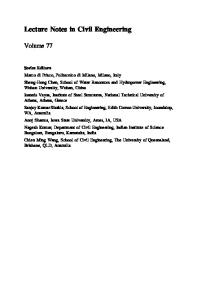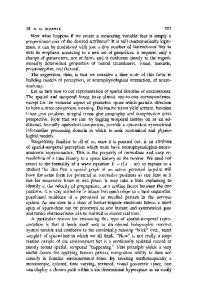Constitutive Modeling of the Stress-Stretch Behavior of Biological Membranes Containing Folded Domains
- PDF / 235,899 Bytes
- 7 Pages / 612 x 792 pts (letter) Page_size
- 47 Downloads / 339 Views
0898-L14-05.1
Constitutive Modeling of the Stress-Stretch Behavior of Biological Membranes Containing Folded Domains Melis Arslan1, Mary C. Boyce1, Hang J. Qi2, Christine Ortiz3 Departments of Mechanical Engineering1 and Materials Science and Engineering3, Massachusetts Institute of Technology, Cambridge, MA 02139, U.S.A. Department of Mechanical Engineering, University of Colorado, Boulder, CO, U.S.A.2 ABSTRACT The mechanical behavior of the red blood cell membrane is governed by the lipid bilayer which resists changes in surface area and the underlying spectrin network which resists changes in shape. The spectrin network can be modeled as an idealized triangulated network. Each spectrin chain consists of folded domains along the length of the chain which can unfold during stretching of the chain. A domain will completely unfold under the application of a chain force of 20 to 35 pN depending on the rate of imposed chain stretch. During macroscopic stretch of a network, individual chains within the network will experience different levels of chain stretch since the network chains will collectively stretch and rotate to accommodate the imposed stretch. Hence, the stretch on any individual chain will depend on the magnitude and state of macroscopic strain. A microstructurally informed continuum level constitutive model is developed which tracks individual chain deformation behavior as a function of macroscopic strain and also determines the overall macroscopic network stress-strain behavior. Using the introduced continuum approach and statistical mechanics based models of individual chain forceextension behavior, the stress-stretch behavior of the membrane under uniaxial tension is simulated at large stretches and the behavior of the constituent chains is monitored. Domain unfolding occurs within constituent chains during network deformation and the effects of this domain unfolding on the overall macroscopic stress-strain behavior of the network subject to deformation at different strain rates is revealed. INTRODUCTION Many protein molecules have multidomain structures which result in a forceextension behavior with a characteristic saw-tooth pattern due to stretch-induced unfolding of domains along the molecular chain. During a displacement controlled extension test, the force increases in a nonlinear manner with stretch until reaching a peak, whereupon there is a drop in the force, followed by a nonlinear rise to a peak, followed by a drop, and so on. Upon reaching a rate-dependent peak force, a domain will unfold, releasing additional chain length and thus, increasing the configurational space available to accommodate the overall extended chain length. Due to the entropic nature of the single molecule extension behavior, the increase in configurational space results in the observed drop in force and the increased compliance after the force drop.
0898-L14-05.2
Single molecule force-spectroscopy has been used to quantify the force-extension behavior and corresponding mechanically-induced unfolding of domains along
Data Loading...










